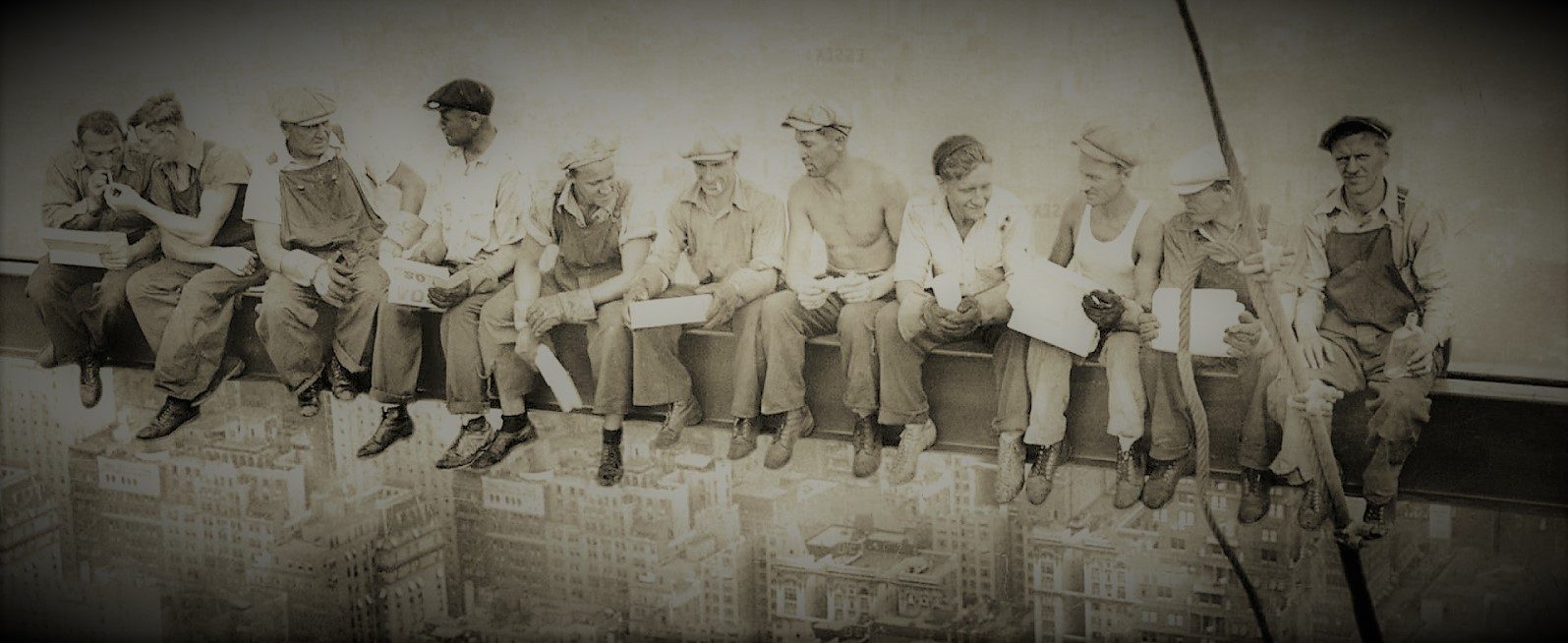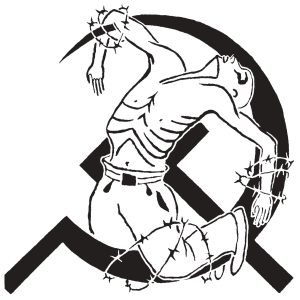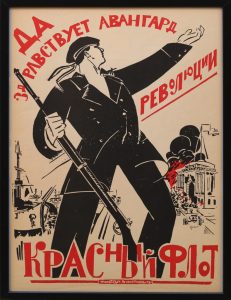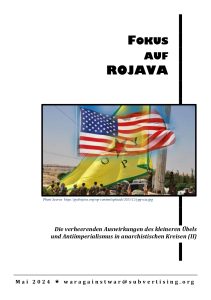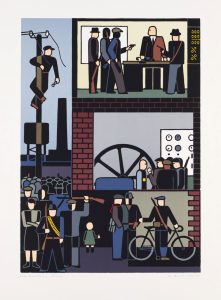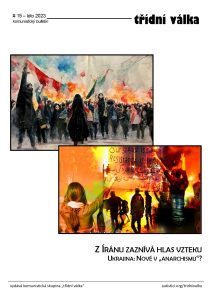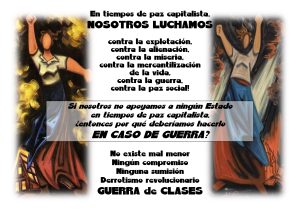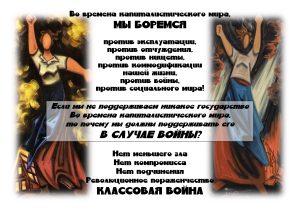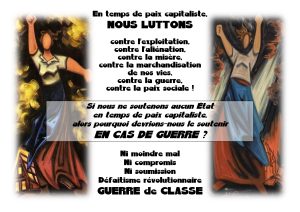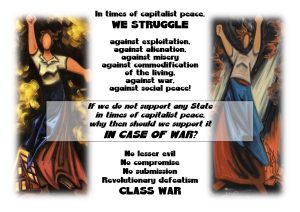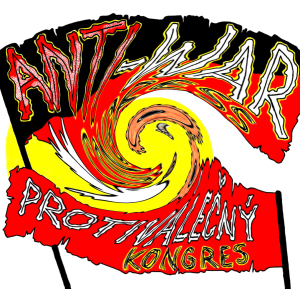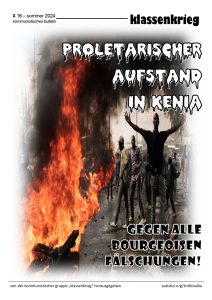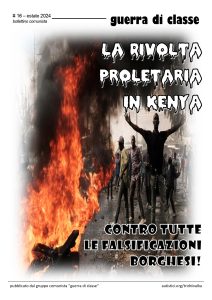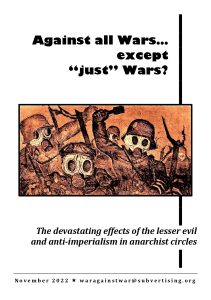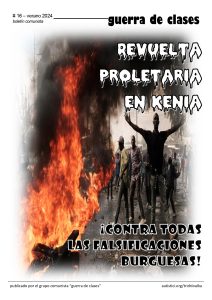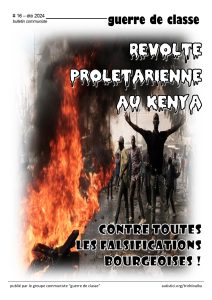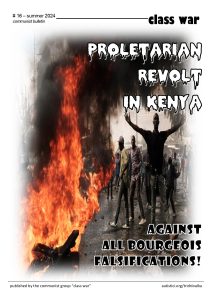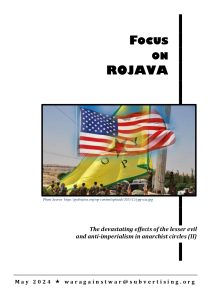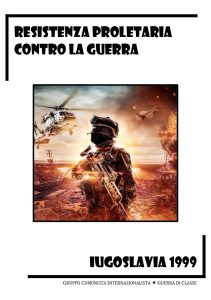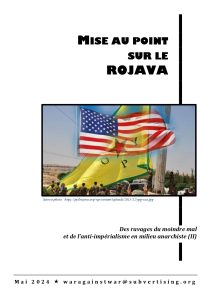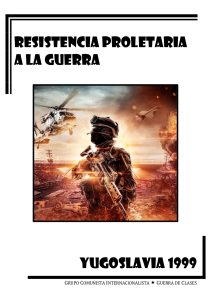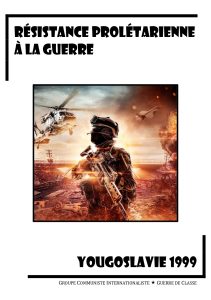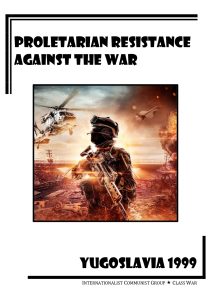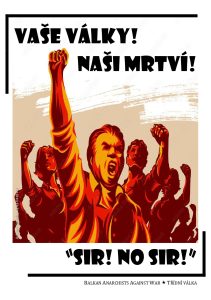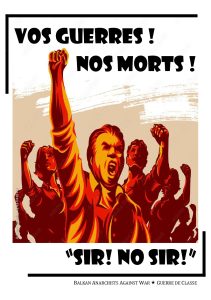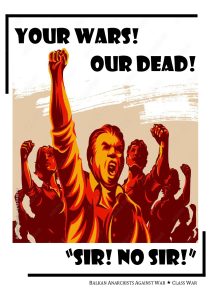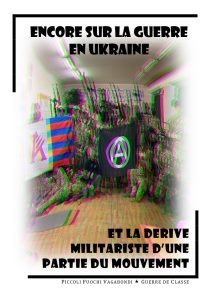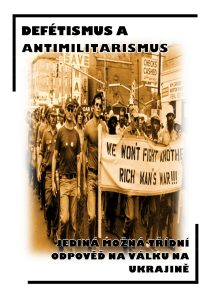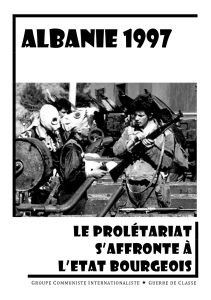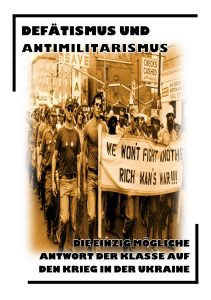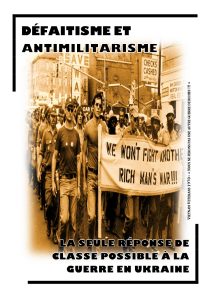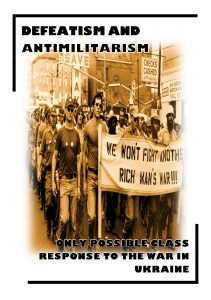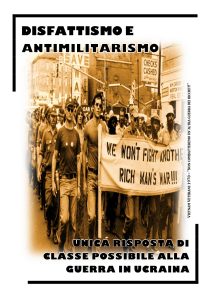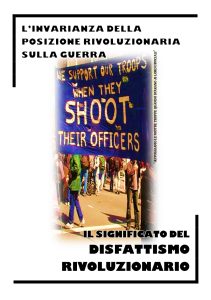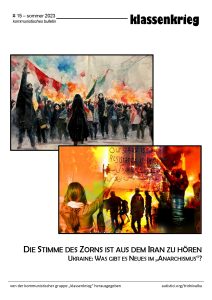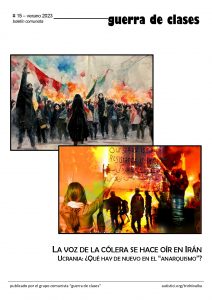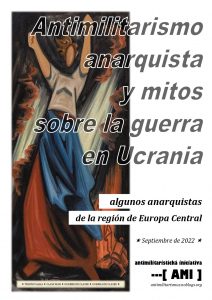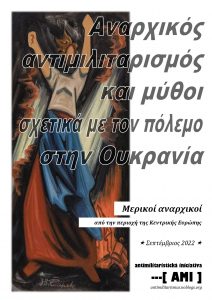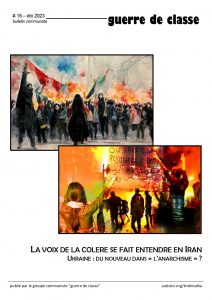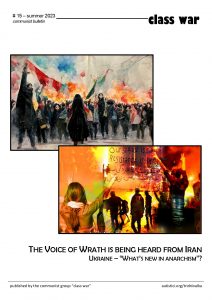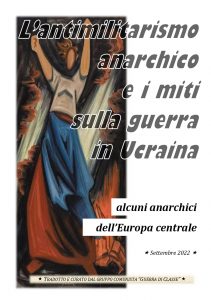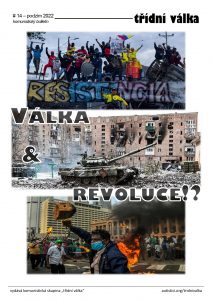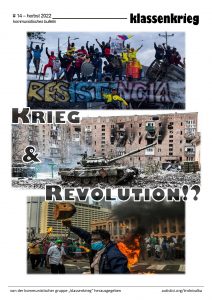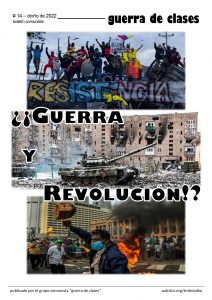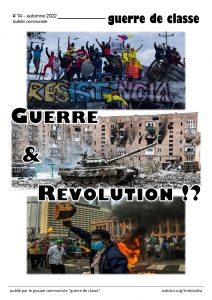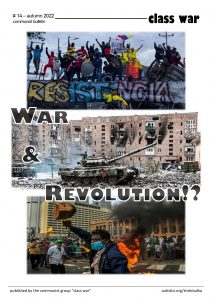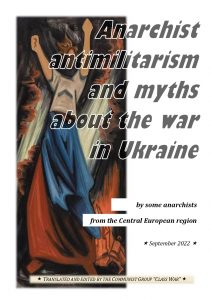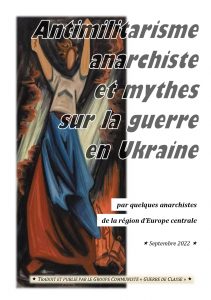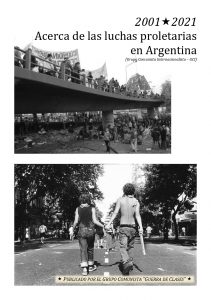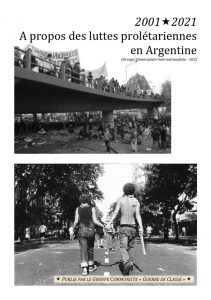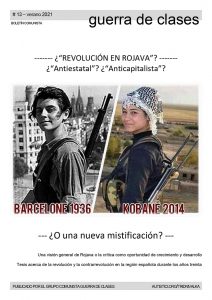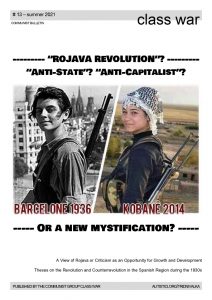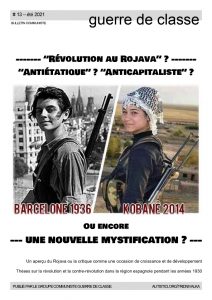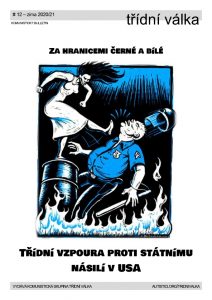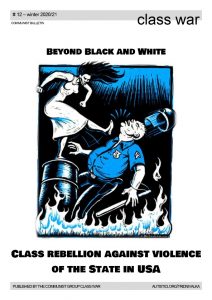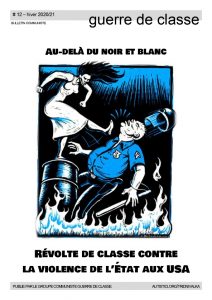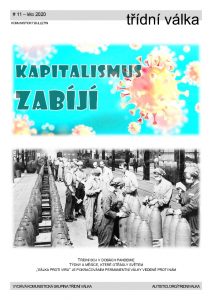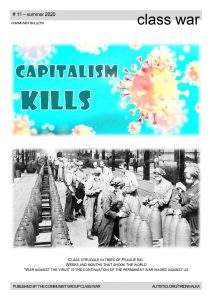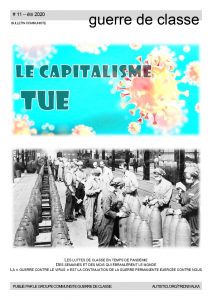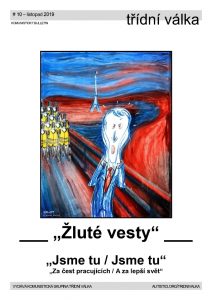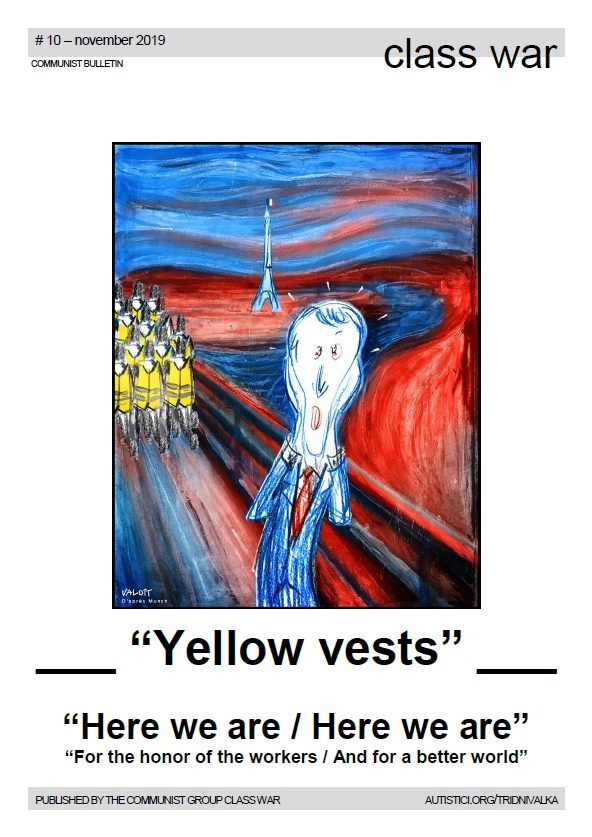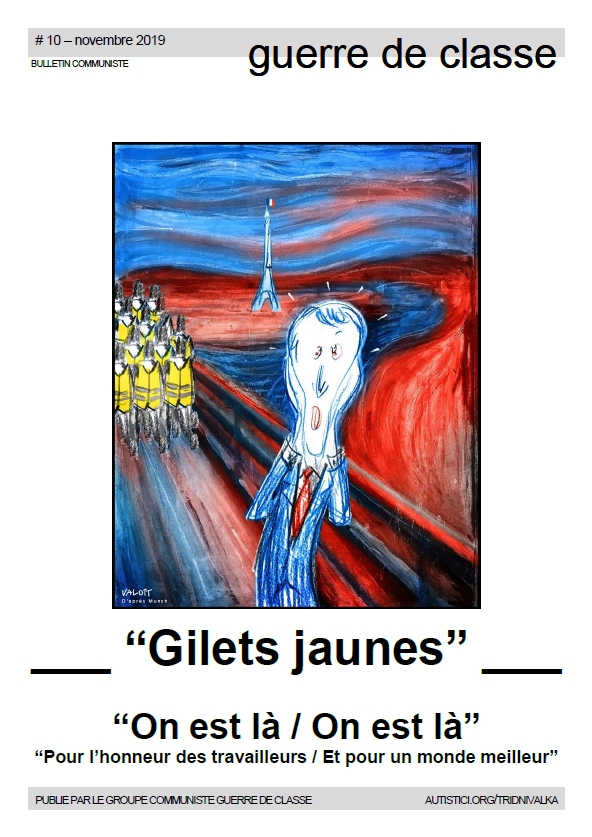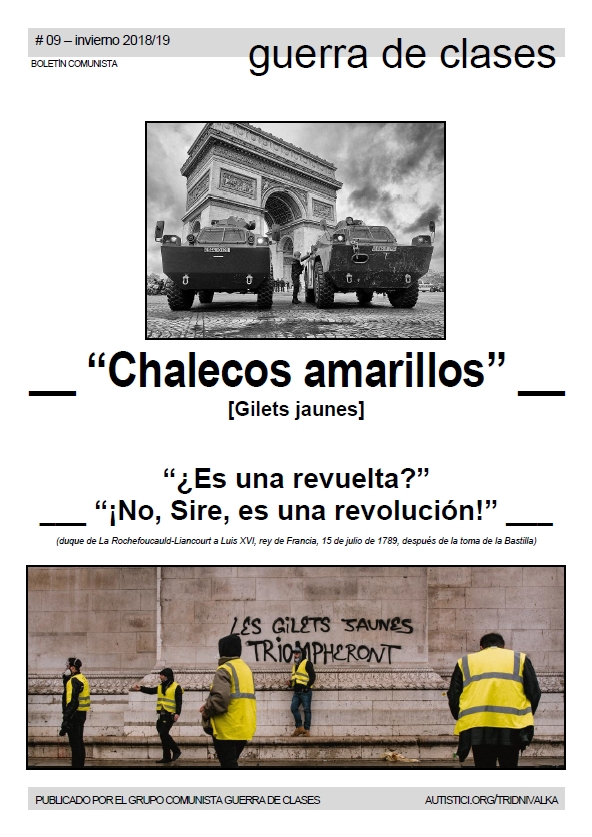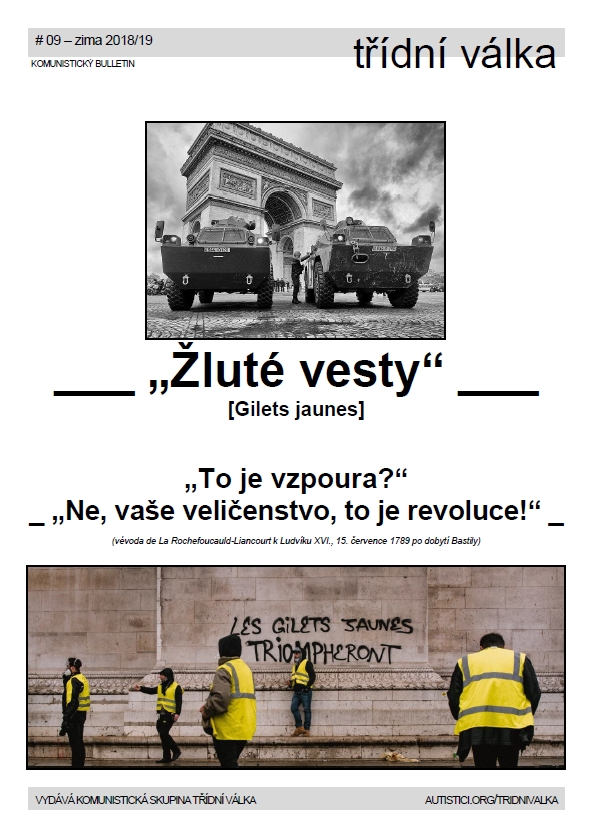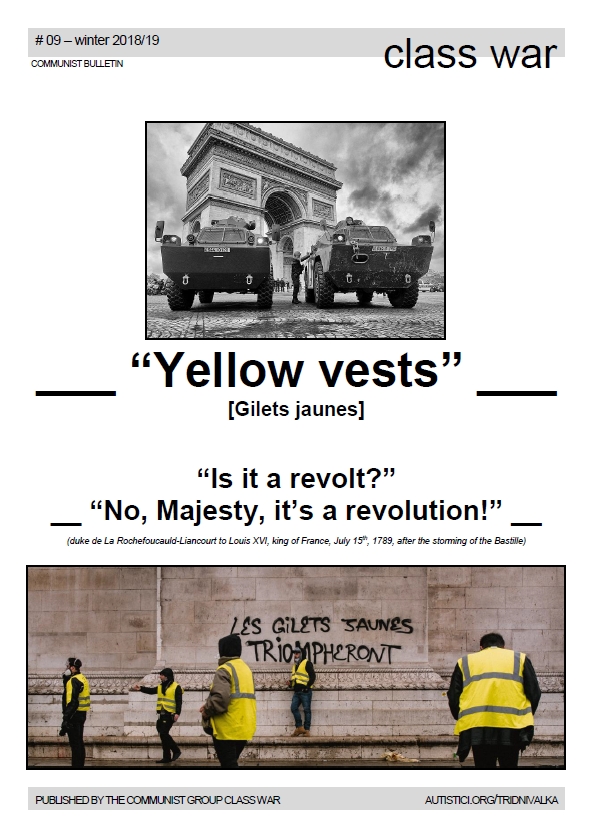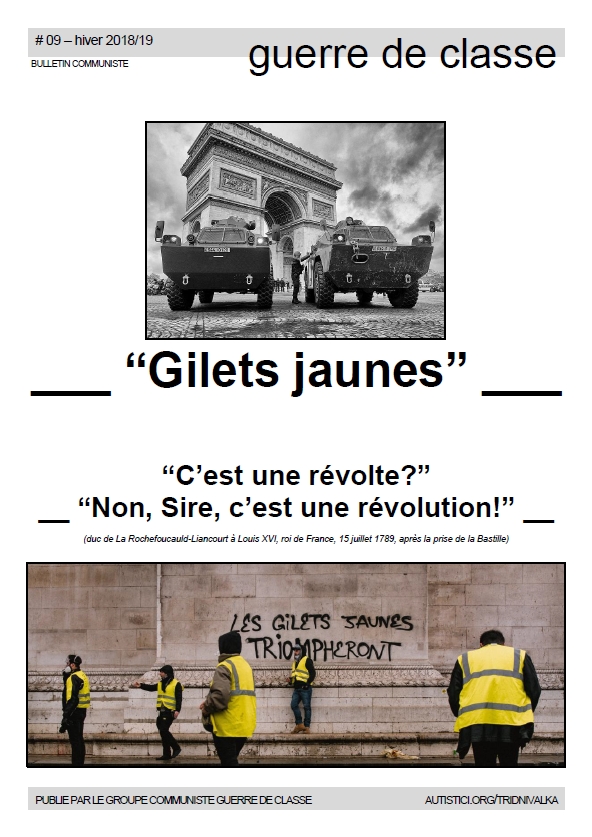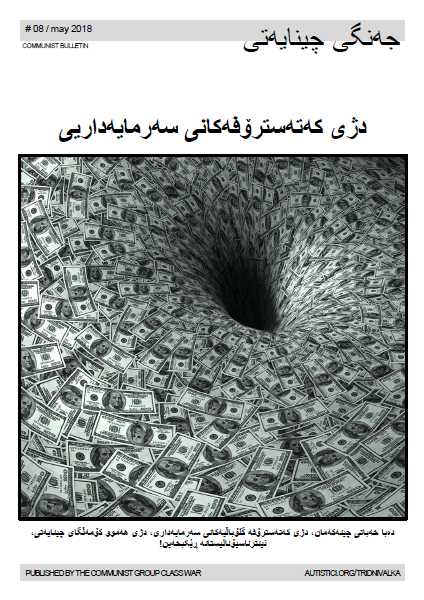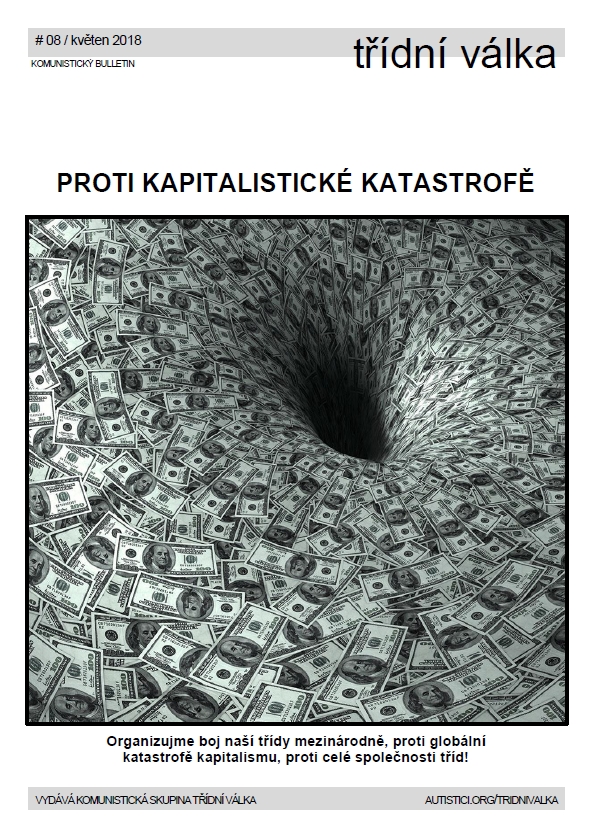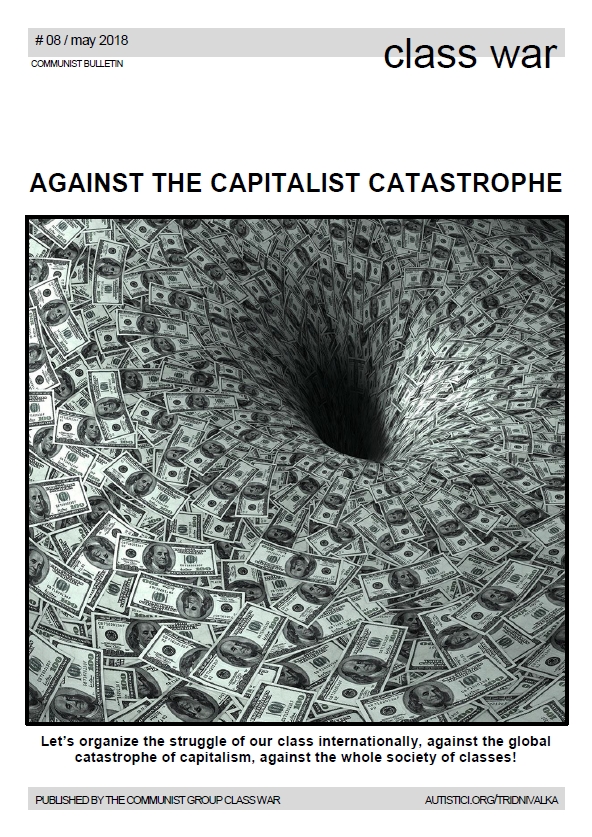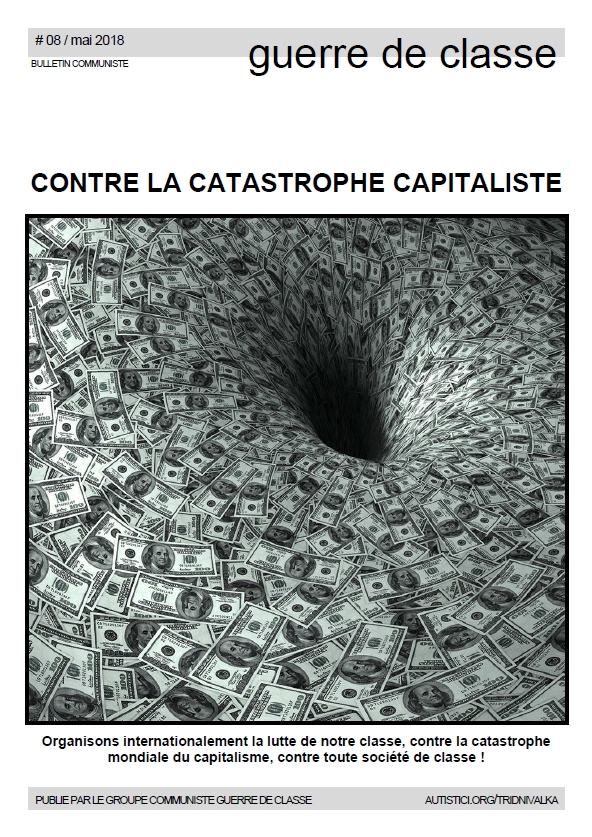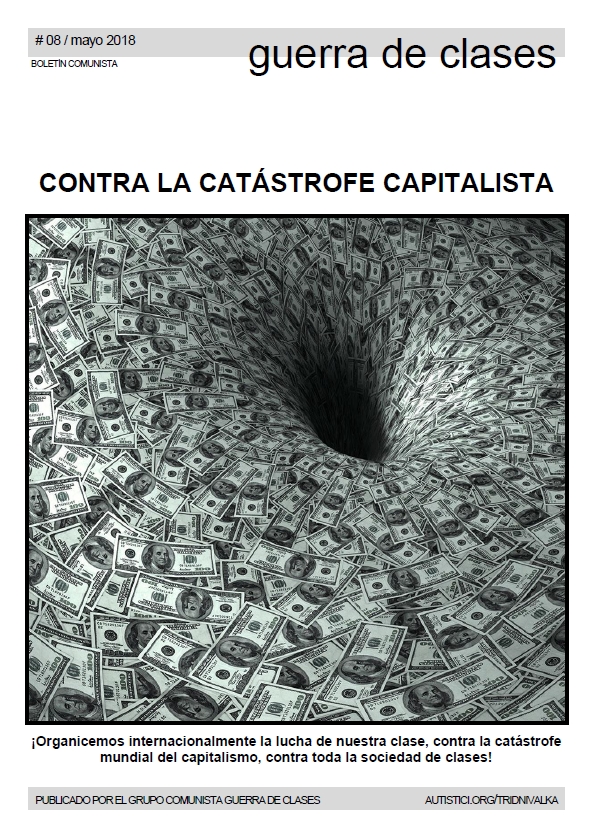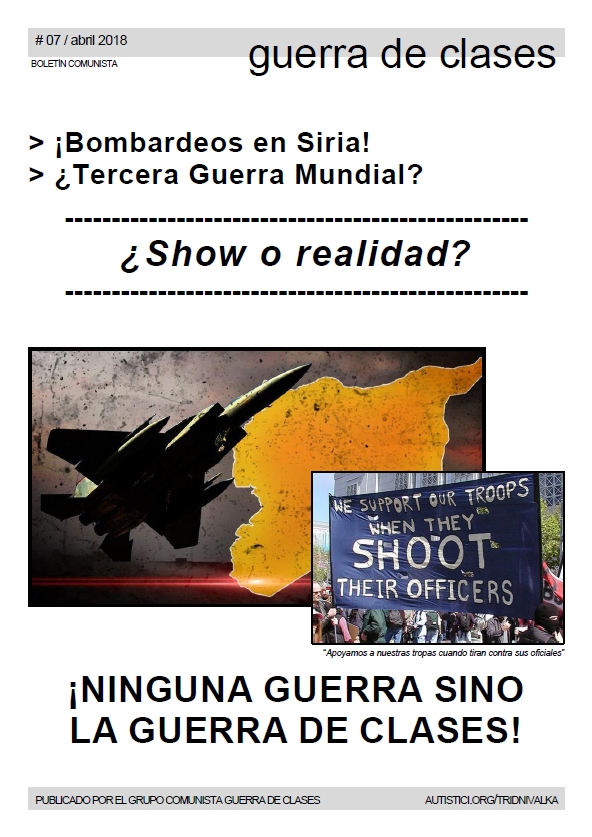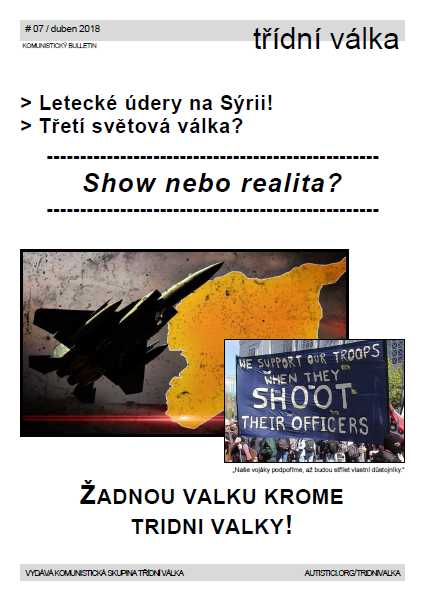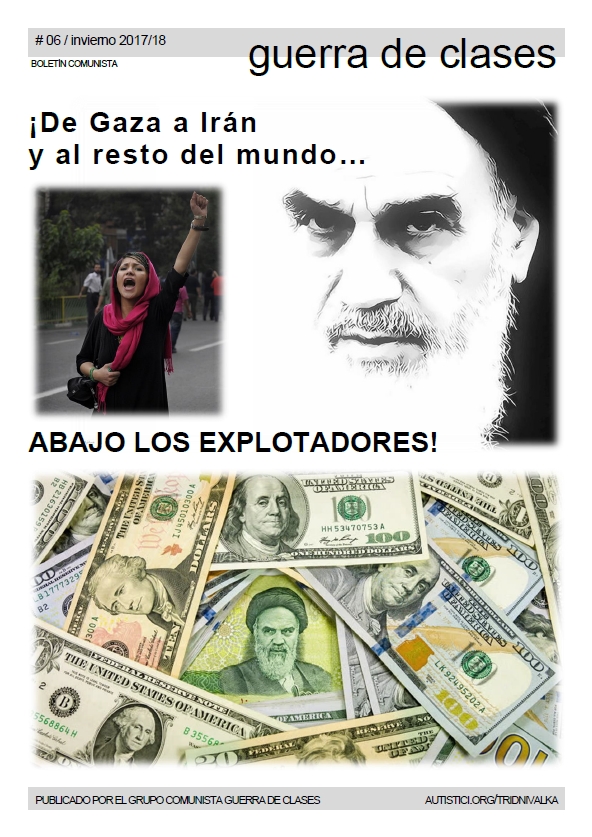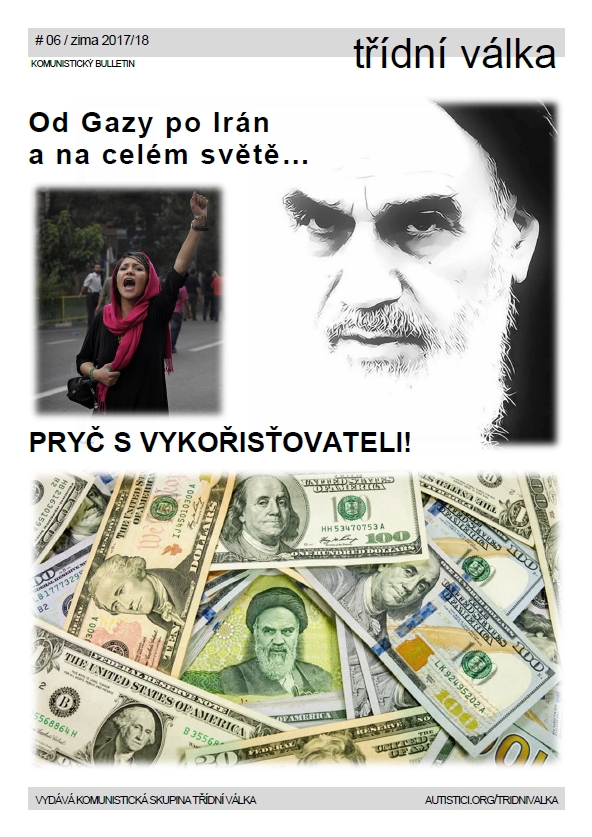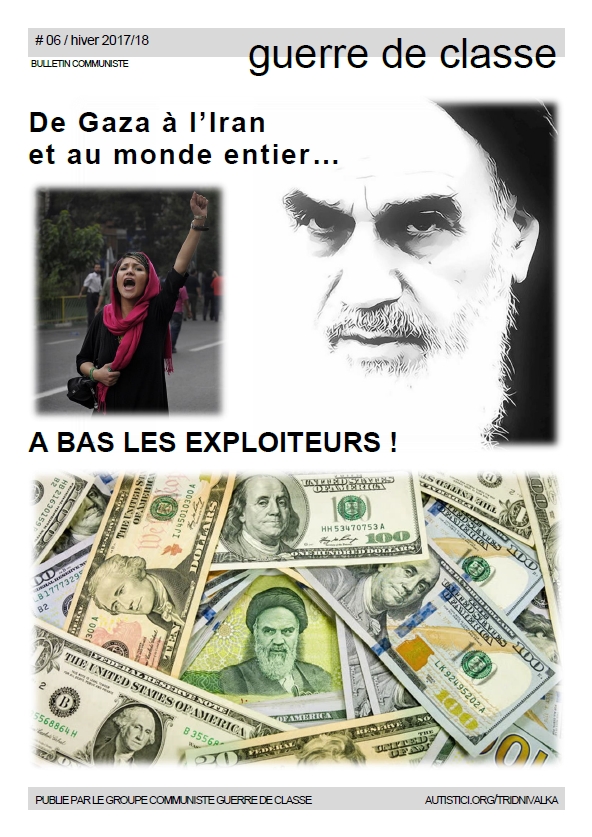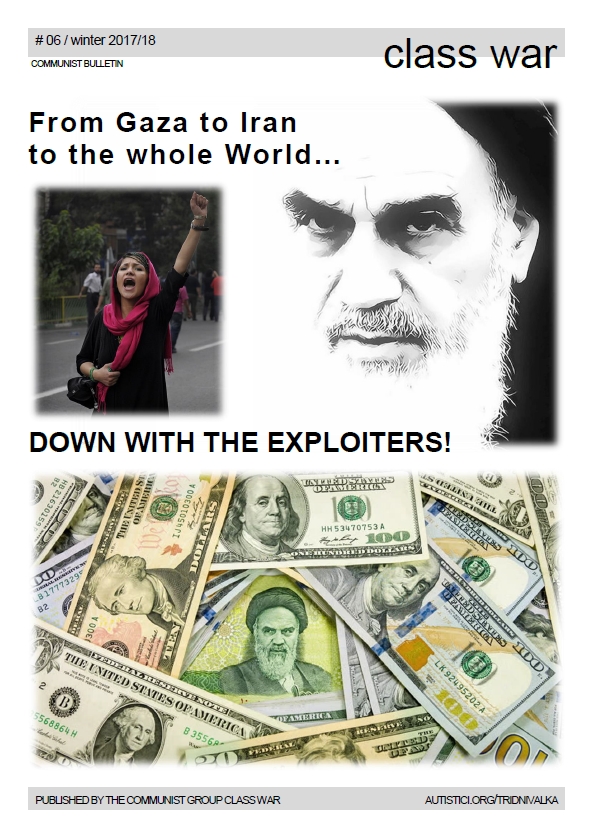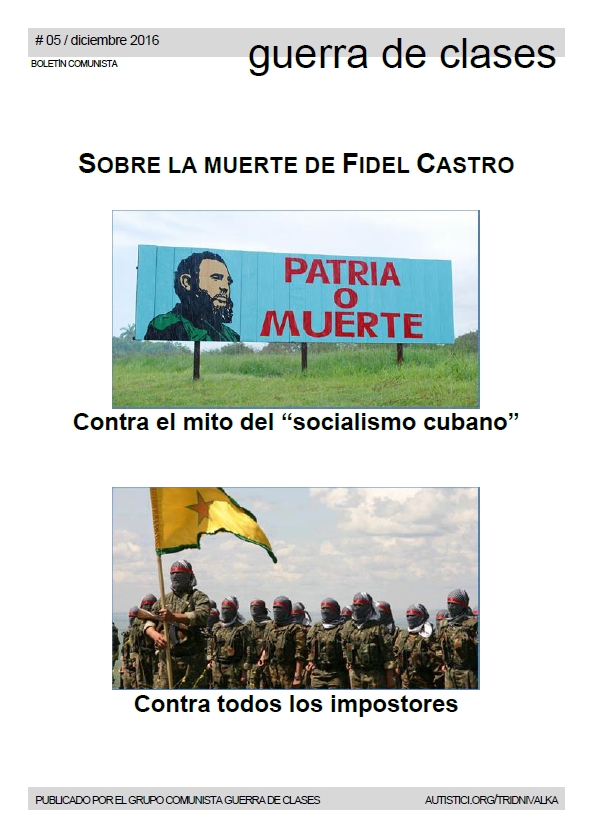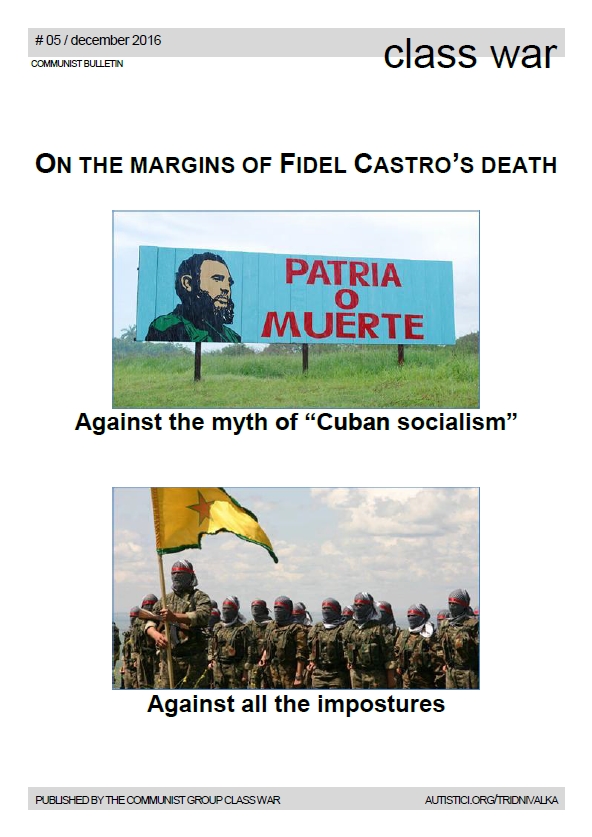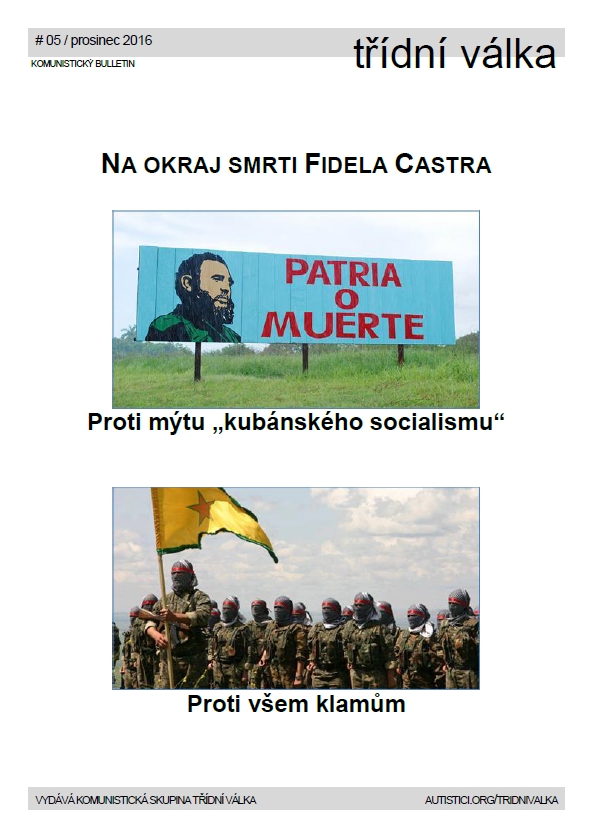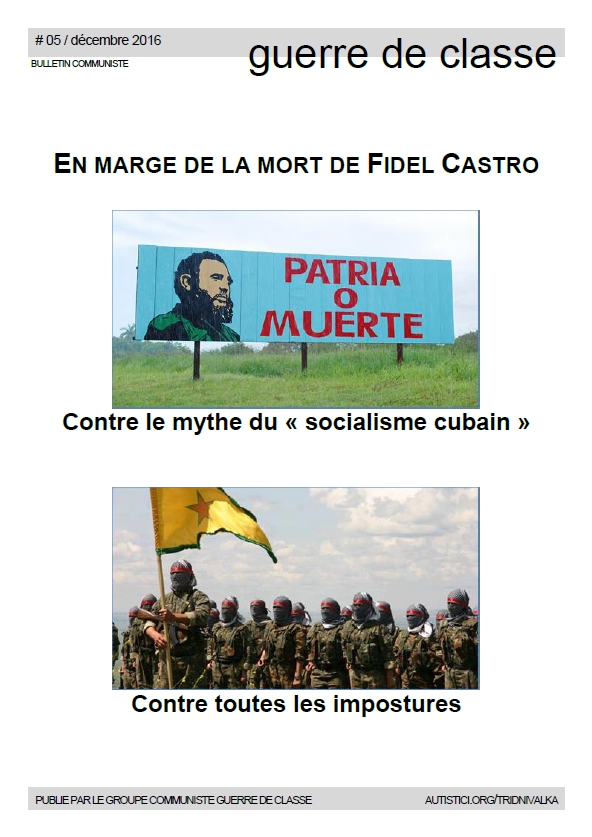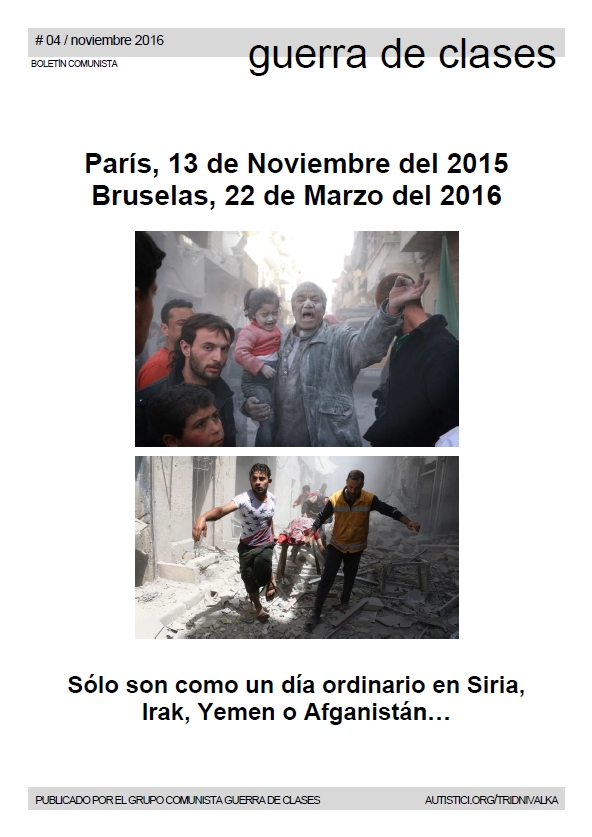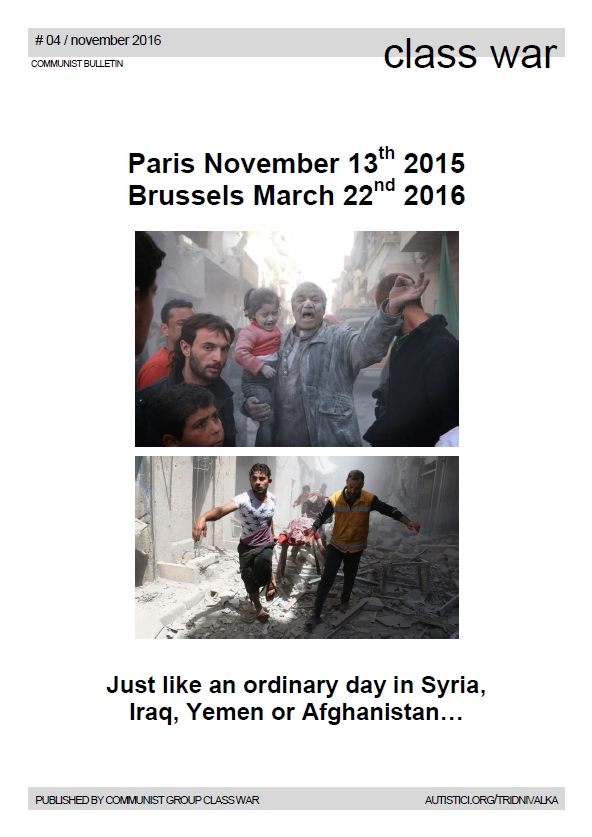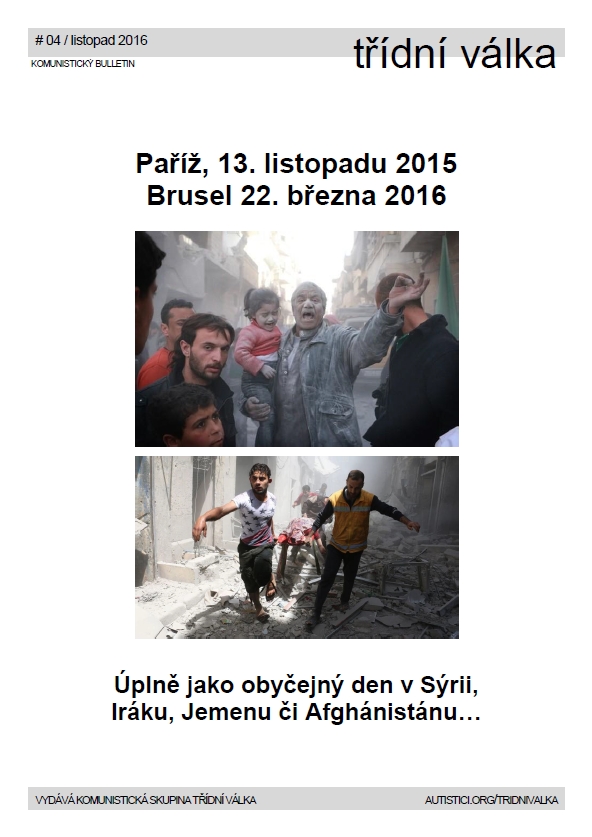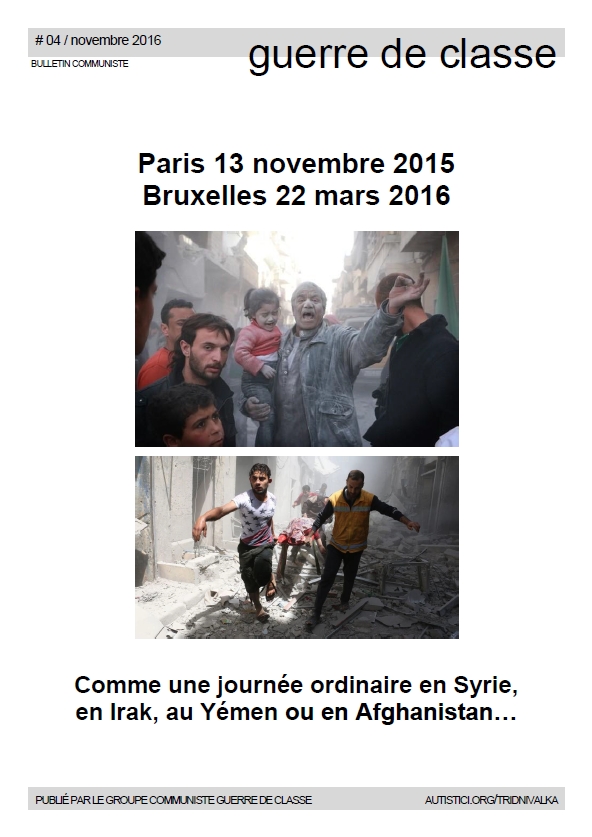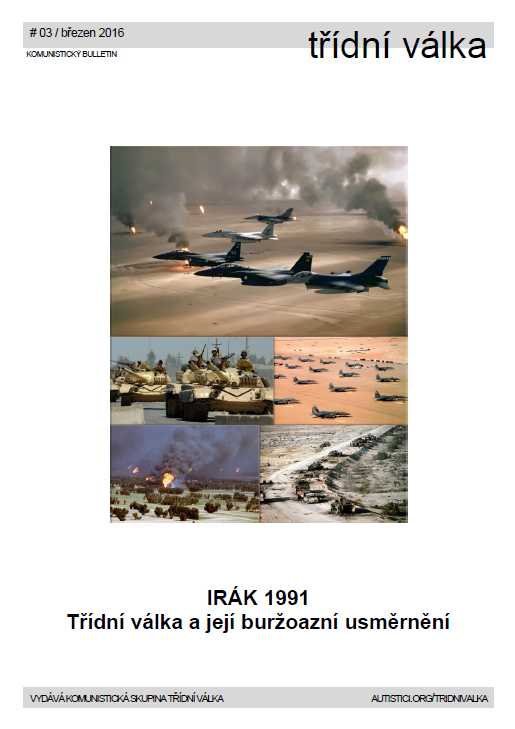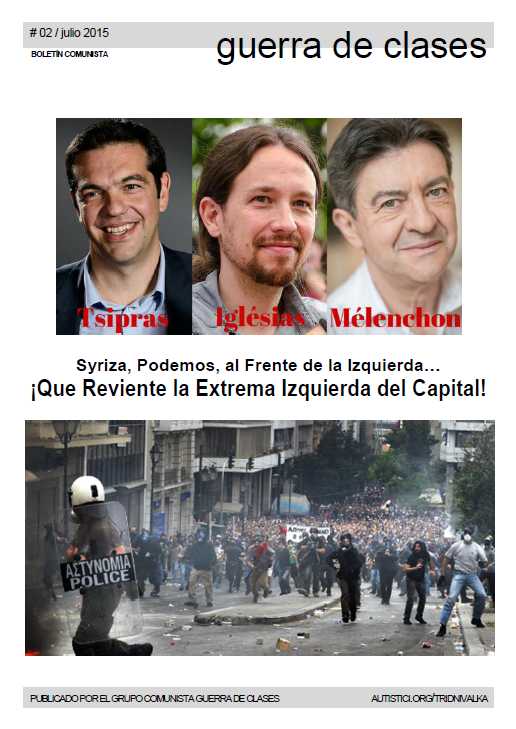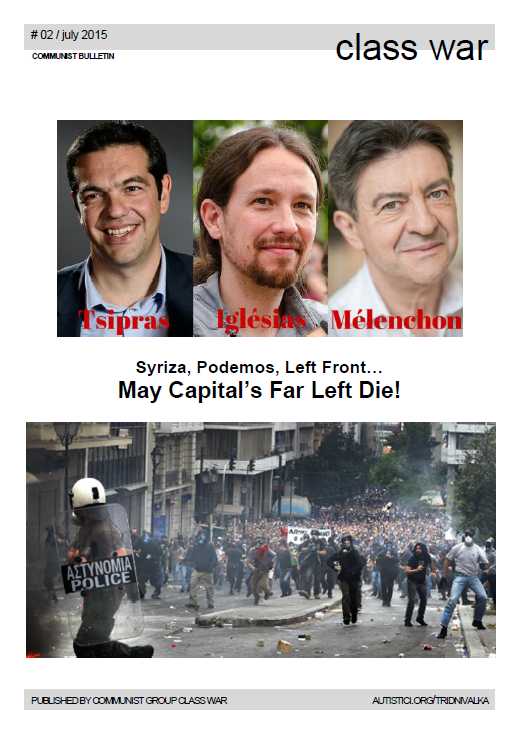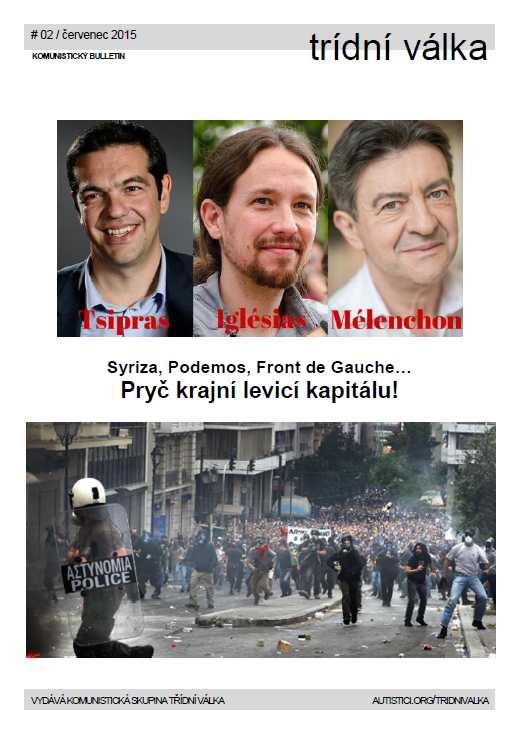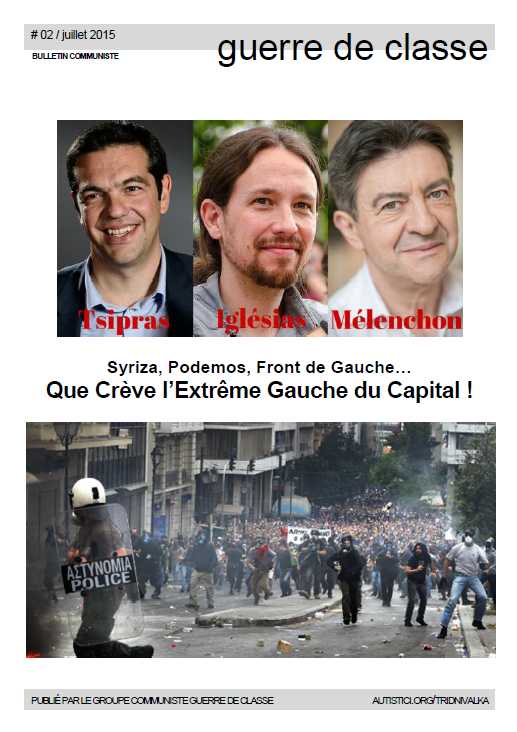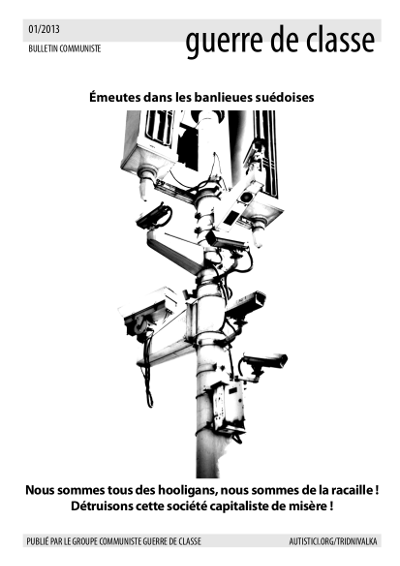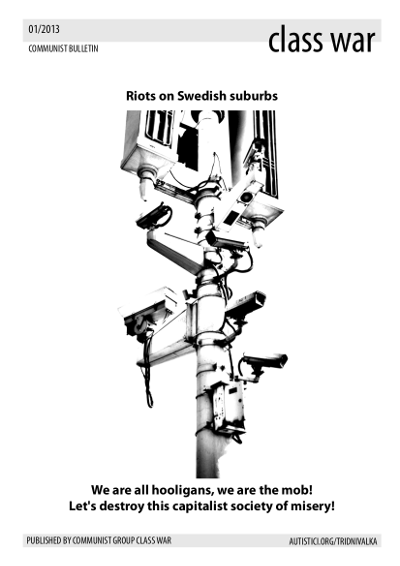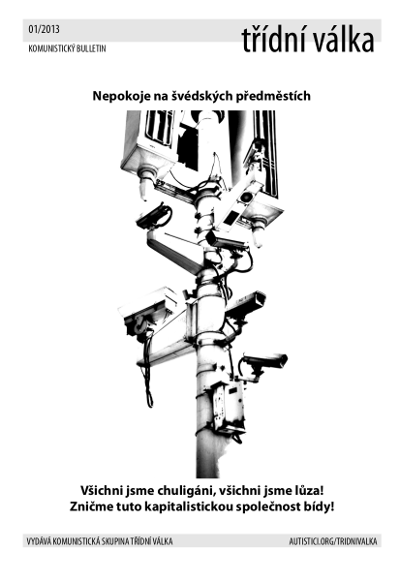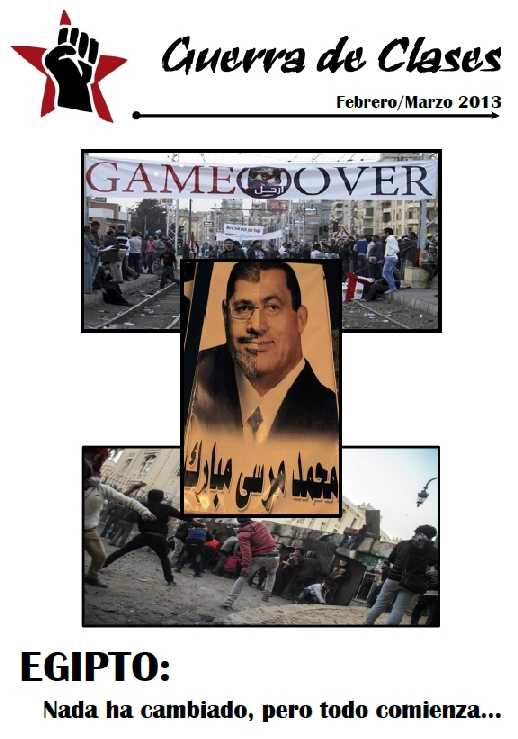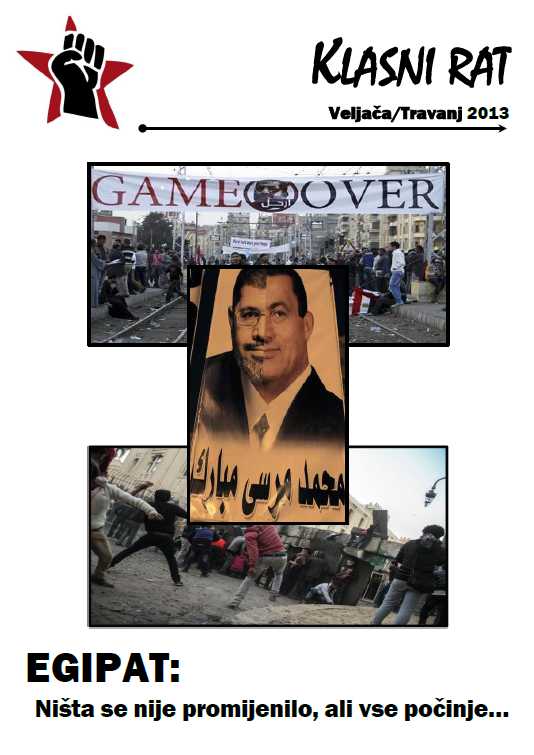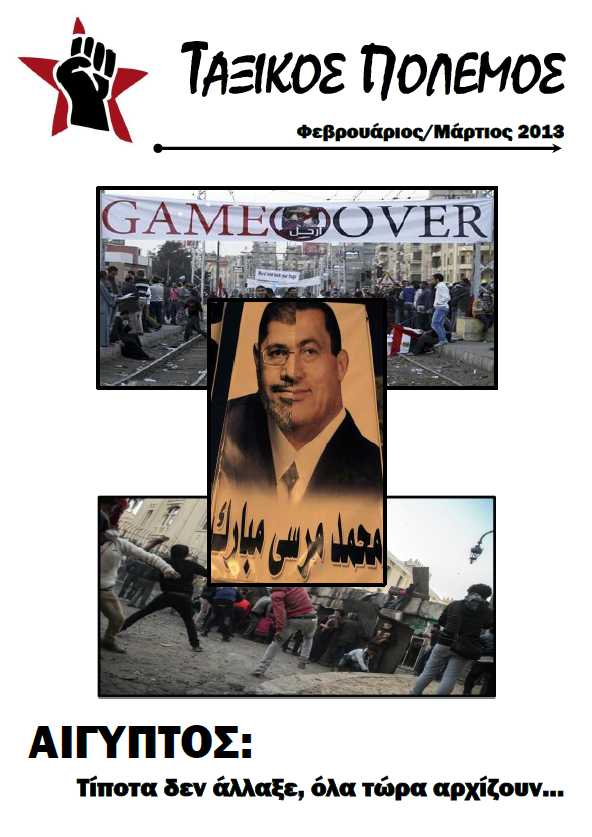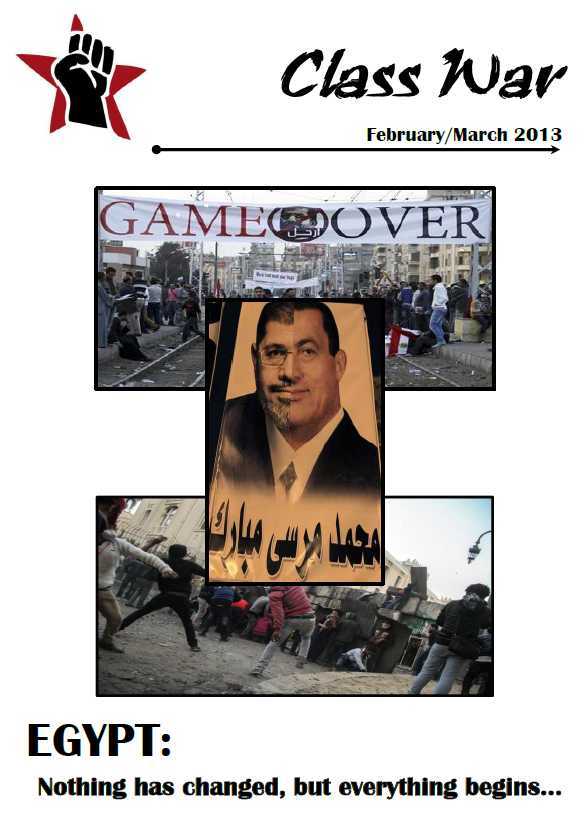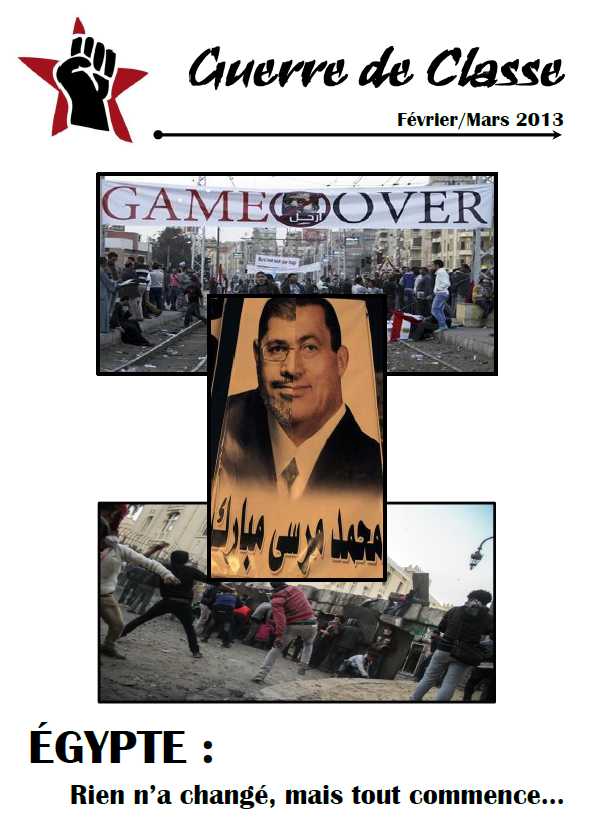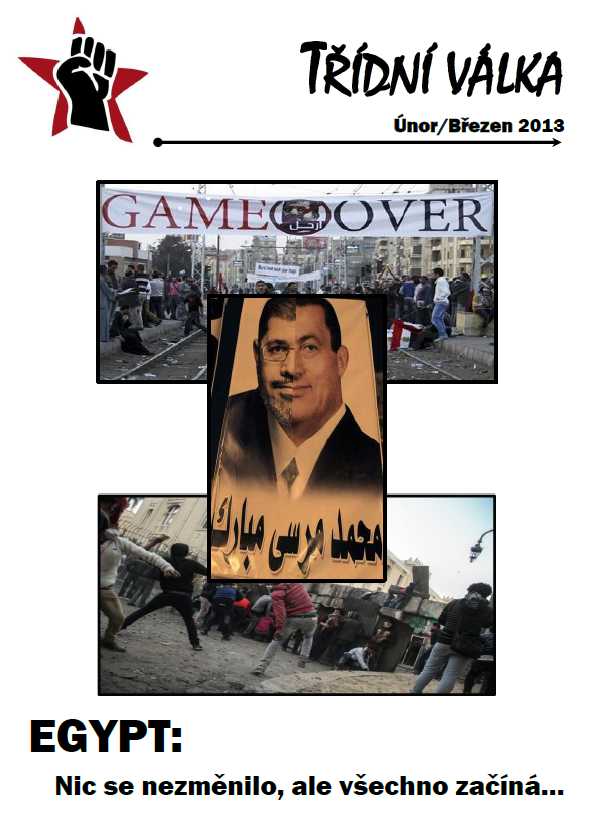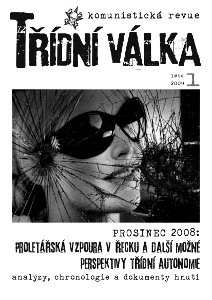| Español | Français | English | PDF |
/// PAGE UNDER CONSTRUCTION ///
- [Chile] Territorial assemblies: autonomous organs created by the community in struggle
- Destituent assemblies for the abolition of Capital, the State and wage labor
- Provisional notes on the “anarchic” mass revolt that is shaking the Chilean region
- Chile: Where are we going? Towards uncertainty and permanent conflictuality! A few words from and for the October revolt.
- From Chile: An Anarchist Analysis of the Revolt and the Repression
[Chile] Territorial assemblies: autonomous organs created by the community in struggle
The first fruits to be yielded from the fertile terrain of the insurrection in Chile are the territorial assemblies, instances which are self-organized by the inhabitants of the whole country, as a channel for resolving the immediate needs of the struggle, and for its propagation. In them, the measures, prospects and demands of this movement are being debated. In many cases, with a character that is strongly anti-institutional and opposed to party-politics. The assemblies reflect, in an embryonic form, the real need of the proletariat to equip itself with organs of power representative of the class, that defend and impose its necessities until the last breath without compromising with the political establishment.
These organizations, still embryonic, manifest the feeling and the need to directly influence reality, raising the question of the sovereignty over our lives to the State and Capital, since in practice, organizing collectively in order to solve our problems and to deepen this struggle expresses a dispute against the State for the control and direction of social life. That is why it is necessary for these assemblies to establish themselves as autonomous, directing the dialogue towards the exploited themselves and not towards bureaucratic institutions: it is the class interests themselves which are at stake and it will be by confronting their limitations that we will recover all that has been lost, and not by mediating between the grassroots and the State.
In being an organ of the neighborhoods, the assemblies are immersed in the daily life of the territory; therefore their functionality is their main weapon. Their capacity to expansively cover the needs of the struggle – such as supply, self-defense, health, transport, communications, solidarity with their prisoners, etc. – will be the force that will endow them with legitimacy. In this sense, the assemblies are the autonomous expression of the community that self-organizes its needs and its struggle against the State and Capital. That’s why its functionality CANNOT be spent up in petitions or in the constituent assembly. We understand that many people still believe in social-democratic refrains and think that the State can solve their immediate problems, but we know that this won’t happen. In fact, it will worsen the precarity. It is essential that by the time that the revolutionary eruption begins, this prelude will have served to teach the best lessons: to fortify the assemblies and their autonomous character, which are our main triumph so far.
This newly inaugurated cycle of struggles will be a lengthy one. The insurrection that have overwhelmed Chile in these past few weeks is still ongoing and nothing seems to foretell that it will end. The Pandora’s box of social revolution has started to open and the task of creating territorial power has been put on the agenda. This has set off the alarms throughout the political establishment, from the Left to the Right, the entirety of bourgeois institutionality has pulled strings to wipe out or co-opt these autonomous instances of organization. Its main strategy is to lead the movement into its narrow framework of political representation, for this it has placed the “cabildos” at its disposal [“town hall meetings”] that systematize the demands and “raise” the petitions. Here the State is the only possible interlocutor and the possibilities of dialogue begin and end with the solutions it can give us. Let’s not allow the assemblies to become conveyor belts of the State.
We know that any attempt to humanize Capital will come up against a capitalist world crisis, which brings with it an environmental crisis that, for many experts, entails the terminal crisis of Capitalism. From Greece to Ecuador, Leftist governments had to give in to the demands of the World Bank and apply austerity packages that put at risk the same people as always: the working class. Social democracy will always be the “good cop” safeguarding the assurances of the IMF and those of its national bourgeoisies above any other interest.
Until now, this movement has unfolded mainly in the streets; the spontaneous street protests have paralyzed the country principally through confrontation with the police and the interruption of capitalist circulation. Barricades, noise demos, looting and burning have been part of the proletarian arsenal for confronting power. Its content is “against everything”; against the totality of the system that kills us slowly. The assembly movement is called on to be what gives substance to the street protest, what puts the real solutions for the needs of the people on the table, as well as what animates the behaviors and values that make a new way of life possible: solidarity, community spirit, mutual aid, and the insurgent offensive will be the debacle of the capitalist mode of production.
However, it is necessary and URGENT that these assemblies be extended to the workplaces, mainly to the strategic productive sectors. That they posit the radical questioning of the capitalist way of life to its final consequences and that the prospects of production be transferred from infinite capitalization to the satisfaction of human needs. Historical examples such as the Cordons Industriales or the Comandos Comunales can be vital in order to grasp the transition which we are seeing out. No change will be possible if we, the workers, do not hold in our hands the power over the means of survival and of production, if we do not empower ourselves with the wealth we generate in order to decide “how” and “for what reason” to produce. It is not about learning how to govern and self-manage Capital; it is about creating a new way of life. The whole economy depends on us and they will tremble when they understand that we have come to realize that.
History has shown us that the State, as a way of guaranteeing living conditions, will always be a way of guaranteeing the domination of one class by another, of perpetuating Capitalism. With or without a change of constitution, the State will always watch over the perpetuation of exploitation, leaving intact the real bases of everything: private property and wage labor. In the heat of this struggle, we are creating our own tools to depose the existent and forge a new world. The prelude to revolution has already begun.
ALL POWER TO THE TERRITORIAL ASSEMBLIES!
Sources in Spanish:
https://materialesxlaemancipacion.espivblogs.net/2019/11/08/chile-asambleas-territoriales-organos-autonomos-de-la-comunidad-de-lucha/
https://proletariosrevolucionarios.blogspot.com/2019/11/chile-todo-el-poder-las-asambleas.html
https://hacialavida.noblogs.org/post/2019/11/09/asambleas-territoriales-organos-autonomos-creados-por-la-comunidad-en-lucha/
https://antagonismorp.wordpress.com/2019/11/11/chile-asambleas-territoriales-organos-autonomos-creados-por-la-comunidad-en-lucha/
English translation: Los Amigos de la Guerra de Clases
Destituent assemblies for the abolition of Capital, the State and wage labor
Sent by comrades from the Semi-arid North
Neo-liberal citizenism is trying to institutionalize the rebellion by means of pre-formatted assemblies and colonial councils. Between the well-intentioned ingenuity of some and the welfare-oriented empathy of others, they will only manage to recycle the hegemonic order that is reproduced in the market-centered society, in the repressive forces and in capitalist accumulation. Thus initiating a new cycle of domination and betrayal of the past revolts. The “constituent” process functions as an apparatus of disarticulation of the Community of Struggle, harnessing the responses to the generalized crisis in order to appease the anger of the exploited and thus rebuild a new everyday life with the same smell as that of before the October revolt. From neighborhoods and governmental institutions they manage the bait thrown by the neoliberal consensus in order to demobilize the rebellion through dialogue, respect and tolerance with those who only deserve judgment and punishment, i.e. the bourgeoisie and their henchmen. This new “Social Pact” will only bring more of the same, SLAVERY AND MISERY. They tell us that the Class War does not exist and that “national unity” is our only lifeline. They stipulate where, when, and what you will talk about, and how long it will take you. Friendly technocrats, professional and humble, prepare, consciously or unconsciously, to put an end to humanity’s last breath, to the final struggle against Capital. We will never be able to build a new life on the foundations of a putrid reality. To put a crack in the everyday life of capitalism and to destroy capitalist social relations is an immediate task to propel an effective and anti-capitalist revolutionary process that does not permit the metamorphosis of any form of human domination.
Let’s not allow the flame of revolt to be extinguished, let’s prevent them from capitalizing on our rebellion and let’s blow the adaptive adjustment of capitalist domination out of the water. Life or catastrophe, the future is uncertain, but we have known how to sail in turbulent waters.
Against the leaders, and against the State who steal the fruits of our combats!
Printable PDF in Spanish:
asambleadestversión2
Source in Spanish: https://hacialavida.noblogs.org/post/2019/11/01/asambleas-destituyentes-por-la-abolicion-del-capital-el-estado-y-el-trabajo-asalariado/
English translation: Los Amigos de la Guerra de Clases
Provisional notes on the “anarchic” mass revolt that is shaking the Chilean region
On Friday, October 18th, a wild revolt broke out in the city of Santiago and by the following day it had already spread to almost every city in the country. The apparent motive was the fare increase in the public transportation in Santiago (in the buses of the Metropolitan Network of Mobility and the Metro), but at heart was displayed a total discontent with the capitalist way of life. An enormous and uncontrolled movement thus made its historic appearance and as some comrades have affirmed in several pamphlets distributed in the revolt: “nothing will ever be the same again”.
The Favorable Aspects of the Movement For the Antagonist Perspective
# The first thing we must emphasize is the spontaneous generalization of the movement and its practical critique of the totality of the capitalist-neoliberal way of life: mass expropriation and distribution of commodities of big capitalists (supermarkets, shopping centers, pharmacies, banks, etc.), destruction of State infrastructure (police stations, municipal buildings, etc.), massive repudiation of the repressive bodies of the State in a “democratic” context (National and Investigative Police and the military), and an intuitive outline of a critique of the totality of the commodification of all aspects of everyday life (there is no concrete “claim” or “demand”, we want to “change everything”).
# The motivating role that the proletarian youth has played and continues to play, with its programmatic intransigence and resolutely subversive combativeness.
# The wild protests effectively constituted a considerable damage to the private property of the big capitalists of this country: this was the real reason why the State put soldiers on the streets. This horrified the capitalist ruling class.
# Another aspect that has called our attention deeply is the proliferation of nuclei that widely practice aggressive violence and self-defense against the repressive forces of the State in the demonstrations – as much in the “center” as in the peripheral neighborhoods. There is something like “diffuse mass proletarian violence”, which is coordinated in solidarity in the midst of the barricades, which makes – at least for now – any kind of specialization or professionalization of this activity by small groups unnecessary. So far, this has been sufficiently effective.
# The breakaway from the isolation and lack of communication to which we are subjected daily in this system, manifested by spontaneous class solidarity and social communication outside of previously prefabricated roles.
# Regardless of the “State of Emergency”, the curfew, and the military in the streets, the proletariat has not been afraid and has not abandoned the struggle, despite the brutal repression that has claimed a still unknown number of people murdered, tortured, disappeared, and imprisoned. At the time of this writing, it has been announced in many regions, including the Metropolitan Region, that the curfew will be lifted because of the social pressure of the proletariat, which has not respected it at all and which manifests a visceral hatred of the military.
# In spite of all the efforts of the State to return to “a certain normality” and the defamation by the mass media, this has been impossible to restore, since our class has continued to protest on a daily basis without even “asking permission” to do so – all the demonstrations have been “illegal”.
# The reality of the struggle has surpassed the attempts by the press to “spectacularize” the revolt: the proletariat has recognized that the essential social function of the press is to distort the facts and to mount a narrative in line with the interests of the ruling class – the journalists are the “spokespersons” of capital.
# The movement, in the context of the revolt, is endowing itself – embryonically – with territorially rooted organs of struggle, based on the formation of self-organized neighborhood assemblies found in diverse neighborhoods and localities building an anti-capitalist perspective from below which is opposed to the precarity of life. We consider these spaces of proletarian associativity to be strategic for forming a community of struggle, because they express the need for self-activity on the part of the proletarians themselves autonomously from any intervention external to themselves.
# A substantial sector of the proletariat has rejected outright the proposals of “reforms” with which the government has tried to extinguish the fire of revolt: they are considered to be unworthy crumbs, for which the State is held in check, at least for the moment.
# There is no “political sector” capable of proclaiming itself as a representative and valid entity to hold a dialogue with the government: an issue which is a cause of concern to the bourgeoisie. It is a revolt without leaders. Hence, “the anarchy” of this movement.
The Contradictions and Limits that the Revolutionary Minorities Must Combat Within the Movement
# During the mega-marches held on Friday, October 25th, which, according to official figures, in the city of Santiago alone rallied more than 1,500,000 demonstrators, a feeling of patriotic identification and national unity was massively expressed, to the detriment of a class perspective of the social conflict. An example of this was the proliferation of Chilean flags – which had been absent – and a festive and pacifist atmosphere that prevailed throughout the day, this being appreciated by the government itself as an opportunity that “makes inroads to the future and hope”.
# The hesitation shown by certain organized sectors of the workers’ movement to participate in the revolt (for example, the miners of the State company CODELCO and the unions belonging to the National Coordination of Workers NO+AFP), with the worthy exception of the Dockers’ Union of Chile (UPCH) and the construction trade guild grouped into the combative union SINTEC.
# The echo, which in certain social sectors has made the rumor which is spread by the press and the government that there exists a wave of looting that targets private houses and small businesses – cases of which have been very isolated and uncommon. This has been expressed in the phenomenon of the “yellow vests”, neighbors organized in squads who defend their neighborhoods from non-existent looters. This is dangerous because it is a breeding ground for neo-fascist ultra-right currents and because it turns proletarians against each other.
# The presence of militants of traditional parties and of the “new left” – which is more of the same – in the self-organized assemblies and town-halls, who try to co-opt and supplant the self-direction of the movement in order to impose their positions and become valid interlocutors to negotiate with the powers that be.
# In spite of the great qualitative leaps in vast extent that the movement has made, it has not been able to coagulate and consolidate a clearly class perspective, a weakness which evinces a great pending task that must be rectified for the expansion of the movement. This has meant, above all from the mega-marches, the resurgence of an identification of some sectors of the proletariat as a “middle class”, an identification promoted by the parties of order and the mass media.
# The revolt found the revolutionary minorities disorganized and fragmented, which, however, did not mean that they immediately participated in the movement, while attempting to provide orientations through acts and propaganda, despite their limited means. The left and Leninism in general did not want to get involved with the uncontrolled masses, they disassociated themselves from the revolt, and even their most traditional sectors condemned the looting of big business, and they took at least three days to demonstrate their presence in the streets. This underlines the need to build an openly anti-capitalist movement that brings together the most radical sectors of the class.
Provisional Perspectives
In spite of whatever occurs at the conclusion of this grand juncture, it is clear that there has been an irreversible rupture, an opening, which marks a change of era for our class in this region. What thousands and thousands of proletarians without previous experience of struggle have lived through in these days can hardly be erased from the combative memory of our class. This revolt has offered a unique opportunity which must not be wasted: it has become clear that it is only through struggle that concrete demands and improvements in the living conditions of the proletariat are imposed. We have become aware of our own strength. The generalized revolt announces the latent possibility of a possible revolutionary change, of the reconciliation of the human species with itself and its natural environment, in spite of the previous contempt shown by sectors of the subversive milieu of our region – with discourses like “human=plague” or that the “people is dead”. The proletariat has not died, we are not just variable capital, we have an enormous role to play in liquidating this capitalist world and it has been demonstrated in practice. For now, the struggle continues in the streets and in the assemblies against the social pact that they want to impose on us and against the reformist hijacking. This revolt intuitively questioned the foundations of the capitalist social structure and that cannot be erased from the historical memory. We’re going further, we’re going towards life.
Some Proletarians in struggle in the Chilean Region
Saturday morning October 26th
Subversive Spring of 2019
Sources in Spanish:
https://panfletossubversivos.blogspot.com/2019/10/notas-provisionales-en-torno-la.html
https://materialesxlaemancipacion.espivblogs.net/2019/10/27/notas-provisionales-en-torno-a-la-anarquica-revuelta-de-masas-que-sacude-a-la-region-chilena/
https://valladolorinternacionalista.blogspot.com/2019/10/chile-notas-provisiones-en-torno-la.html
English translation: Los Amigos de la Guerra de Clases
Chile: Where are we going? Towards uncertainty and permanent conflictuality! A few words from and for the October revolt.
From a certain point onward there is no longer any turning back. That is the point that must be reached. Franz Kafka
The indomitable protest by secondary students against the increase in the underground train fare and the immediate response of the repression was the propitious context for the social war to appear in all its unequivocal rawness days later.
The dynamic of the conflict was rapid, unpredictable and instinctive. The malaise focused mainly against the underground public transport generalised and started to flare up, become visible, recognise forms of combat, exploding – literally – on every street corner of Santiago. On October 18, 2019 a widespread revolt broke out throughout the capital; barricades and clashes were occurring at any moment, everywhere. Different symbols, structures and infrastructures of power were attacked throughout the whole city, and rapidly, throughout the whole country. Order cracked and transgression flooded the streets, immediately individuals came together and attacked what they had always considered as their chains. There is no planning but spontaneity that knows how to clearly recognize the enemy: the State, capital and their repressive forces. The burned or looted objectives are the best examples: ministries, financial institutions, land predators, large warehouses stocked with merchandise and food, and much more.
Revolutionary violence has been validated and unleashed in the widest areas of the oppressed.
Some detestable theorists or enthusiasts of the lowest “political competence” have noted: Where were the anarchists? Well, the answer is as easy as it is simple: in the street, in the neighbourhoods, in the towns, in the multiform revolt, in the street fighting.
There certainly hasn’t been much time to sit down and write or sketch some ideas, that has simply been impossible throughout these days.
Given the extent and depth of the revolt, which at times seemed to be capable of really effectively shaking off the State within a short time, the response by the powerful was to decree a “State of Emergency”, putting troops from the Army to patrol the streets and implement a curfew that has continued for days in various territories.
The rapid suspension of the ticket increase by the authorities, showed that this revolt does not have any clear request. It does not have specific “demands” or “claims”, or to put it differently, there are so many that it has ended up being against the world ruled by authority and commodities.
The repression, on its side, has come down with an arsenal which, although it had never completely disappeared, is flooding back today and taking up its historical continuity: sexual violence, thousands of people arrested, hundreds injured by flashballs, LBD and live ammunition, dozens of compas who have lost their eyes, torture sessions, murders where the bodies are thrown into fires to cover up the uniformed authorship of these massacres and a whole series of different and successive counterinsurgent strategies.
Things are moving fast and taking their own paths, anarchists, we are in the street looking to take this to the point of no return of authority. Different positions have emerged in the very practice of fighting, in the atmosphere of revolt and the possibilities arising from it. Several have agreed with calls and attempts to form neighbourhood assemblies, experiences of “counter-power” or “people’s power”, referred to by the press as “citizen councils”, which would allow to elaborate a table of negotiable demands and of course faces or organizations with which to come to agreements. Assemblies that, as we can see, have turned into citizen’s alternative and a pacifying way out of the conflict, proving to be another cog of dominion. The intensification of the conflict is undeniably opening up paths where it is possible to meet, build and create, always with a perspective of struggle, and in an antiauthoritarian way, networks with different persons and groups, far from and against every kind of enlightened imposition or centralised attempts to take over.
In this regard, the idea of permanent confrontation makes sense when we take nothing as established or eternal, the dynamism of the struggle must necessarily aim at the elimination of any kind of authority, be it the State, the assembly or any other body claiming to control our lives.
This revolt has no names or single direction, it does not belong to anyone because it belongs to all the rebels and insurgents who, like us, are fighting in the street, so to claim in a ridiculous way one or another action in the context of this revolt is simply a crude attempt to take leadership of it.
On the other hand, the necessity posed and put in tension during past conversations about similar situations, but clearly with a more steady pulse, is now indispensable. To create spaces of coordination and encounter where the fundamental axis is to take up the challenge of the violent confrontation against the State-repressive apparatuses. At this moment, Power has taken its most brutal face into the street, which, far from immobilizing us, is a call to raise our sights according to the new scenarios that are presenting themselves and getting closer. To consider the offensive as real practice way beyond talking, to be able to put in place an infrastructure that allows us to face them. This is where some doubts exacerbate the tension; are we able to support, intensify and extend the violent confrontation against Power in this new panorama? To what extent is the revolt contagious and reproducible? We have witnessed how social democracy captured this rage, encapsulating it in some who were “outside” demands, we do not have any demands, but wagers and our wager is the destruction of the State, its promoters and defenders. May the social catastrophe announce the collapse of the relations founded on capitalist logic, and affinity lead us to continue to advance towards this point of no return.
As often happens, we do not have answers like others, organizations that are already planning the administration and federations of these assemblies, their duration, revocability and statutes, but rather questions and negation, for we are those who understand anarchy as permanent tension. Given the uncertainty of the moment, we are collecting experiences, recognizing, reading, learning and sharing reflections and urgent conversations in the hours that intense street confrontation and disobedience to the curfew leave us. We know that it was, is and can be an important moment and that there are possibilities that have never been opened up before in the effective destruction of the State, but also that our compass is still denial, even in these climactic moments. We know and know perfectly well what turns us into slaves, and our steps have to go right in the opposite direction.
Let it be clear. Those who support, promote and defend capital and domination are our enemies.
For the liberation of all the prisoners of the revolt and the subversive prisoners!
Solidarity with the wounded and those who have been set upon!
The revolt is reproducible and contagious!!
You don’t know how the powerful would tremble if we were to take violence to their door. If their privileges and their lives were threatened, they would negotiate so as not to lose everything. Ulrike Meinhof
Some antiauthoritarians for the social catastrophe
Source in Spanish: https://panfletossubversivos.blogspot.com/2019/10/chile-donde-vamos-hacia-la.html
English translation: https://actforfree.nostate.net/?p=35336
From Chile: An Anarchist Analysis of the Revolt and the Repression
Chile is currently experiencing a State of Emergency decreed by the right-wing government of Sebastián Piñera as a result of the outbreak of a revolt that exploded on Friday, October 18, 2019.
This text originated with the need to communicate to comrades from different parts of the world the present situation that is experienced in this territory.
From an anarchist point of view, we share here what we consider to be some main points to make known and to contribute towards understanding the current moment.
PRELUDE: YOUTH IN STRUGGLE AND THE SPARK THAT IGNITED THE FIRE
After a week of mass fare evasion on the metro service, featuring mainly high school students during the month of October before the public transport fare increase, multiple instances of individual and collective disobedience that resulted in the destruction of infrastructure and confrontations with the police forces inside and outside the metro stations, spread throughout various parts of the city of Santiago.
On Friday, October 18, the spread of these mass fare evasions and the level of radicalism they developed was unsuspected by many and underestimated by the government which, along with its loyal journalists and social investigators, still cannot explain why these events led to a situation of widespread chaos that continues to this day.
ACT ONE: OUTBREAK OF AN UNPRECEDENTED REVOLT IN POST-DICTATORSHIP CHILE
On Friday, October 18, the situation of revolt was radicalized at the moment when confrontations with the police and the destruction of capitalist infrastructure took over the streets of downtown Santiago. Initiated on the outskirts of the government palace, the actions of street violence did not take long to spread late into the night in various parts of the city.
Faced with a situation of generalized rebellion and diffuse chaos in multiple urban sectors, the police forces were unable to contain the outburst of rage that since that day has infected broad sectors of a society no longer asleep and fed up with broad sectors of oppression and precarization of life originated in the continuity of the neoliberal economic system and the police state installed in Chile during the recent civil and military dictatorship (1973-1990), conditions of existence and domination strengthened by the centre-left and right-wing governments that have alternated in power after the return to democracy.
The riots that began in the centre of the city were later joined by thousands of people demonstrating in the neighborhoods, beating empty pots as a form of protest and also activating riots, fire and destruction materialized in dozens of buses and public and business buildings attacked, looted and burned, having as a crucial element the dozens of subway stations that hordes of individuals full of rage vandalized and set on fire until late into the night.
The government did not let much time pass before declaring a state of emergency in the city of Santiago, a state of exception that includes the deployment of military personnel to the streets and the control of order by the Armed Forces.
However, a massive, organic, uncontrollable and unprecedented revolt in the post-dictatorship scenario was already unfolding, destroying in practice the obedience, submission and fear imposed by decades of capitalist rule in Chile.
ACT TWO: EXTENSION OF DESTRUCTIVE INSUBORDINATION AND COMMENCEMENT OF CURFEW
On Saturday, September 19, the military forces are deployed throughout various parts of the city in the face of the persistence and exacerbation of the unrest. In the centre of Santiago and in the peripheral barrios the military guard the streets, commercial areas and subway stations. However, demonstrators of all kinds did not retreat and generally repudiated the military presence with the vivid memory of the repression experienced a few decades ago during the years of the dictatorship.
That same day, the number of buses, cars and subway stations torched by demonstrators increased. At the same time, the looting of supermarkets and large shopping centres becomes uncontrollable, and the image of hundreds of people recovering their lives by snatching merchandise from the consumer centres has become one of the most vivid images of the days of revolt and constituted an important factor for the government, overwhelmed by the looting and violence, to implement the curfew that same night in the city of Santiago.
Without any shame, the President and the military chief in charge of the city communicate to the media the restriction of “civil liberties” that began that evening from 7PM until 6AM the following morning. That night, demonstrations, riots, looting, fires and confrontations with the repressive forces continued again until the early hours of the morning throughout the city.
Between Saturday and Sunday the spark of rage spread even further, igniting mass demonstrations and scenes of savage violence in other regions of the country, giving way to a new moment of generalized chaos with multiple acts of rebellion and riots in various cities, leaving under siege, ruins and ashes in just a couple of days a good part of the urban infrastructure with barricades, vandalism and arson attacks on municipal buildings, government buildings, shopping centres and official media buildings. By that time the revolt had already surpassed any specific demands as people from diverse origins and places found each other in the street in the middle of the protests and riots opening a huge critical rupture in the Chilean neoliberal system and its model of capitalist/extractivist exploitation that affects the whole territory.
Since Sunday, October 20, the State of Emergency and the curfew measure were declared by the government against the uprising cities, however, the riots continued to unfold late into the night surpassing the impositions and demonstrating that the anger and violence unleashed by the people against the established order had broken the fear and passivity that reigned for decades in large sectors of the Chilean population.
ACT THREE: DIGNITY AND STRUGGLE AGAINST THE STRATEGY OF STATE REPRESSION
Since the beginning of the State of Emergency, state repression has sharpened and has also spread openly throughout the various uprising territories.
As anarchists, we make it clear that we do not take the position of victims, however, it is always good to share information about the tactics that domination puts into practice as part of the confrontations with insurgents and the rebellious population in general.
In the current context, the repressive arsenal of the Chilean State has materialized into:
– More than 2000 people have been arrested and more than 15 people have been murdered, as well as an indeterminate number of people reported missing.
– Shootings with various types of projectiles, including tear gas, rubber bullets and other weapons of war against demonstrators leaving a growing and indeterminate number of people injured and killed on the street, as well as animals and people living on the streets also injured and killed as targets of the shootings.
– Physical, psychological and sexual assaults and tortures against detained people in public thoroughfares, vehicles and police stations.
– Kidnapping of people using police and civilian vehicles. Images have been circulated of people being locked in the boots of police vehicles.
– Shots fired from behind in the street at people who are given the false impression of escaping from arrests.
– False permissions given by police and military to loot supermarkets that end in arrests and murders that are later reported as deaths caused as a result of the riots.
– Fires in large commercial premises caused by repressive forces so that companies can collect the associated insurance. In some of these fires burnt corpses have been found.
– Throwing people from moving police cars and then shooting them.
– Hanging of the bodies of people killed in vacant lots and of living people in police barracks.
The massive use of social networks such as Instagram, Twitter and Facebook has allowed for the immediate circulation of innumerable audiovisual evidence of the situations described above, which is being disseminated by “alternative” dissemination groups linked to the struggles, breaking the communication strategy deployed by the government and supported by the official media historically servile to power.
The government’s communication offensive represents another part of the repressive action trying to colonize people’s minds via the following methods:
– Censorship and control of information in order to hypocritically hide, justify and/or question the records associated with repression.
– Televised speeches of government authorities that have included the recognition of a social crisis that must be solved by means of a “new social contract”.
– Explicit signaling of a state of war against an internal enemy supposedly organized with a plan to sow chaos and attack small shops, schools and hospitals. Special emphasis has been placed on the criminalization of looters and vandals. Also, in a report on the state television channel, it was mentioned that the riots were being organized by nihilist anarchist cells.
– Rolling news coverage throughout the day instilling the fear of shortages because of looting, spreading the idea that thefts would be spreading to ordinary homes.
– Discursive division of the demonstrators between good, legitimate and festive as opposed to violent ones, against whom any kind of repression would be justified.
– Presentation of a plan of economic and social measures trying to show interest in solving the existing crisis.
– Presentation of the military as forces of protection and peace.
Fortunately the repressive communication strategy of the discredited government has not had the desired effect and disobedience has been maintained in spite of the fact that some eternally submissive and obedient citizens have collaborated with power by voluntarily participating in the cleaning of streets and the surveillance of barrios wearing yellow vests and giving this garment a completely different meaning than the revolt for which it became known for after the recent wild protests in France.
OUR ANARCHIC POSITION: NOTES ON AN EPILOGUE THAT DOESN’T EXIST YET
Between Wednesday, October 23 and Thursday, October 24, the government and the repression have tried to show a softer face in the face of the persistence of the demonstrations and the large number of sources of revolt, to which is added the permanent disclosure of evidence of repressive acts and the public knowledge of the use of a subway station as a clandestine detention centre with testimonies of torture.
In these days, the signs seem to indicate that the generalized revolt has diminished a little in intensity derived to a situation of permanent days of protest with the constant presence of disturbances and confrontations. There are more than a few of us who think that this could give way to a context of progressive pacification with the persistence of some pockets of revolt, strengthening the selective repression against people already known for their participation in social movements, collectives and environments of radical struggle. In fact, people linked to student and environmental movements have already been arrested.
In spite of what may come, those of us who have confronted power and authority long before the current social outburst know that all the repressive and communication practices listed above are part of the repressive arsenal that we and other groups have faced throughout the existence of the state and authority throughout history. Therefore, what we are witnessing today is a postmodern reactualization of methods and strategies already deployed in previous dictatorial and democratic regimes in Chile, Latin America and the rest of the world where domination has affected their interests and has not hesitated to show its true face of planned and systematic oppression.
We know that the opposition and confrontation to the domination has been protagonized throughout the centuries by innumerable generations of rebels, insurrectionists, revolutionaries and subversives of all kinds, in the same way that we have the certainty that we the anarchists have been together with the Mapuche communities in resistance and the hooded youth that in the last 2 decades have known torture, prison and death as part of the repressive politics of the state in the face of the resistance and the continuous attack that we have developed against the capitalist and authoritarian social order.
Today many people are witnessing what we have been propagating for years: that the powerful do not care about deceiving, torturing and murdering in order to protect the world that they have built for their benefit and that the only possible way out of domination against our lives begins with the destructive rebellion against everything imposed by those who try to make our existence a permanent regime of slavery and theft of our freedom.
We are fully aware that all the nuances of state repression, even those that pretend to look like a ‘kind’ face, are part of the counterinsurgency manual inaugurated in Algeria, strengthened by Latin American dictatorships and continued by occupation troops in Iraq, Haiti and other parts of the world. We know very clearly that massive and selective repression, torture, extermination, assemblies and communications tactics of psychological warfare are not a novelty and today we live and face them in a scenario that was never conceived as possible: to develop our daily lives and our struggle in a State of Emergency with the military in the street.
We also know that the existence, proliferation and persistence of anarchic ideas and practices of confrontation throughout the last decades in the Chilean territory constitutes a real, vital and dynamic element that has contributed in some way to the identification and attack of symbols and objectives linked to power in the midst of the current unrest, as well as contributing to the diffusion of a a radical combative subjectivity against the world of capital and authority. However, we are honest in making it clear that the discontent that has erupted with unprecedented violence in democratic Chile corresponds to a general revolt without leaders in which the anarchic individualities are just one of many actors present in the streets.
We have never believed in the good intentions of democratic falsehood, so we are not surprised that the repressive forces are aiming their bullets at children, the elderly and animals. Today we are also learning to live with the curfew that restricts mobility and the possibility to embrace and share among friends, comrades and circles of affinity.
Many emotions and sensations are intertwined every day and minute by minute: rage, impotence, nervousness and a quota of anxiety invade the hearts and minds of many people.
NOTHING HAS ENDED, EVERYTHING CONTINUES
TODAY MORE THAN EVER WE CONTINUE TO FIGHT AGAINST THE STATE, CAPITAL AND ALL AUTHORITY.
Sin Banderas Ni Fronteras
Sources in Spanish: https://panfletossubversivos.blogspot.com/2019/10/chile-una-mirada-anarquica-al-contexto.html
English translation: https://anarchistsworldwide.noblogs.org/post/2019/10/28/from-chile-an-anarchist-analysis-of-the-revolt-and-the-repression/
